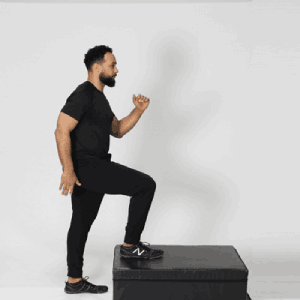Walking: it’s a fundamental motion we often take for granted. But what if every step brings a twinge of pain, a sharp stab, or a dull ache in your knee? For many, this isn’t a hypothetical situation but a daily reality. Knee pain when walking can transform a simple pleasure or basic necessity into a daunting challenge. But why does this pain occur, and more importantly, how can it be treated? Let’s get into the intricacies of knee pain and explore some expert-backed solutions to put that confident stride back in your step.
Contents
Common Causes Behind Knee Pain While Walking
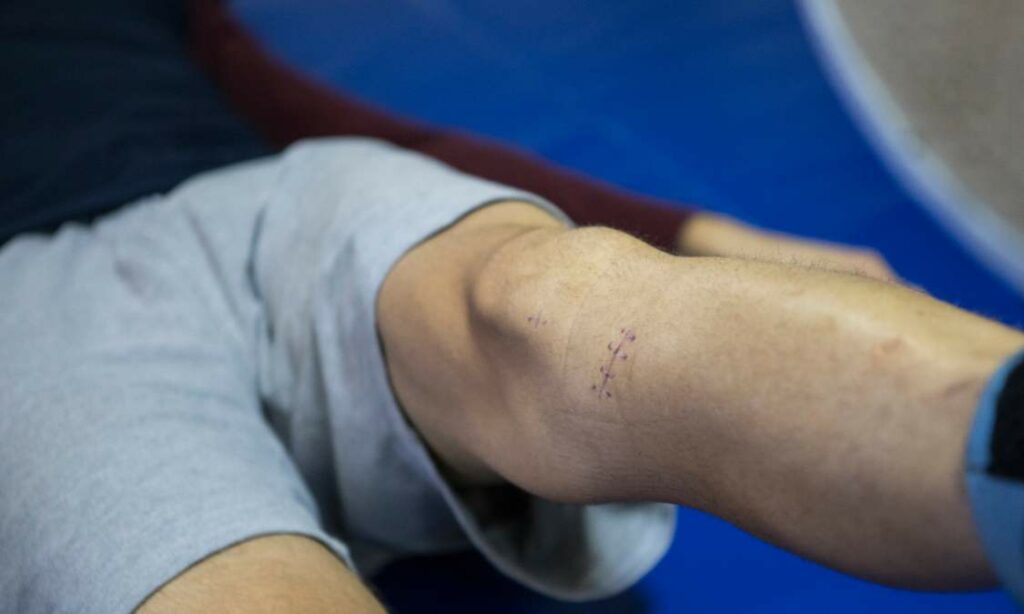
Knee pain can be a perplexing issue, as it might arise from various sources. While walking, even the slightest discomfort can be a cause for concern. By understanding the root causes, we can take proactive measures to prevent or manage the pain. Let’s delve into the most common culprits:
Osteoarthritis
Often referred to as wear-and-tear arthritis, osteoarthritis is a degenerative joint condition where the protective cartilage that cushions the ends of bones wears down over time. This degeneration can lead to painful bone-on-bone friction during movements like walking.
Symptoms: Pain that increases with activity, stiffness after periods of inactivity, swelling, and a decreased range of motion.
Runner’s Knee (Patellofemoral Pain Syndrome)
Despite its name, you don’t have to be a runner to experience this. It refers to pain around the kneecap. It’s usually caused by misalignment of the kneecap, muscle imbalances, or overuse.
Symptoms: Dull, aching pain around or behind the kneecap, especially where it meets the lower part of the thighbone. Pain might intensify when walking downhill or descending stairs.
ACL Injury
The Anterior Cruciate Ligament (ACL) is one of the primary ligaments in the knee, responsible for stabilizing it. Injuries to the ACL can range from minor tears to full ruptures and often occur during sports or activities involving sudden stops and changes in direction.
A loud “pop” sound or sensation, severe pain, rapid swelling, loss of range of motion, and feelings of instability when bearing weight.
These are just a few of the myriad causes behind knee pain while walking. While some might result from acute incidents, others might be due to chronic conditions or wear and tear over time. Identifying the cause is the first crucial step towards an effective treatment strategy.
DIY Remedies To Stop Knee Pain When Walking
 When knee pain strikes during a walk or shortly afterward, you don’t always have the luxury of professional intervention at your fingertips. Fortunately, some tried-and-true home remedies can offer temporary respite from the discomfort. Here are a few you can employ for immediate relief:
When knee pain strikes during a walk or shortly afterward, you don’t always have the luxury of professional intervention at your fingertips. Fortunately, some tried-and-true home remedies can offer temporary respite from the discomfort. Here are a few you can employ for immediate relief:
- RICE Method:
- Rest: When you feel pain, stop and give your knee a break. It’s a clear signal from your body to halt.
- Ice: Applying cold packs for 15-20 minutes can help reduce swelling and numb the painful area. Ensure there’s a cloth or barrier between the ice and your skin to avoid frostbite.
- Compression: Wearing a knee brace or bandage can help stabilize the joint and reduce swelling.
- Elevation: Prop your leg up on cushions or pillows, ensuring the knee is above the level of your heart. This aids in decreasing swelling by allowing fluids to drain away from the knee.
- Gentle Massaging: Using your fingertips, gently massage around the knee, particularly if the pain seems to originate from muscle tension or minor strains. This can stimulate blood flow and ease muscle tightness.
- Warm Compress: If the pain is due to stiffness and not recent injury, applying a warm towel or heat pad can relax and loosen tissues and stimulate blood flow to the area.
- Over-the-Counter Pain Relievers: NSAIDs (Non-Steroidal Anti-Inflammatory Drugs) like ibuprofen can help reduce pain and inflammation. However, always consult with a physician before starting any medication regimen.
- Herbal Ointments: Topical creams containing ingredients like capsaicin, camphor, or menthol can offer a soothing, cooling sensation and temporary pain relief.
Remember, while these remedies provide quick relief, they are not long-term solutions. If knee pain persists or worsens, it’s vital to consult a healthcare professional for a comprehensive evaluation.
Building Strength: Exercises for Knee Health
Strengthening the muscles around the knee can enhance stability, improve flexibility, and ultimately reduce the risk of injuries. When muscles are robust and flexible, they offer better support to the joint and can mitigate the impact of external forces. Let’s explore some exercises that can fortify the knees:
Quadriceps Stretch
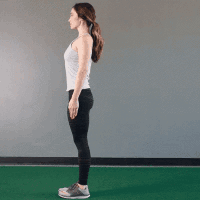
- Description: The quadriceps are the muscles at the front of the thigh. Keeping them flexible helps in maintaining proper knee alignment.
- How to: While standing, bend one knee, bringing your heel towards your buttocks. Hold the ankle with the hand on the same side and pull gently. Ensure the knees are close together. Hold for 15-30 seconds and switch legs.
- Repetitions: Do 2-3 sets for each leg.
Hamstring Curls
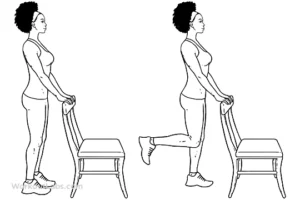
- Description: The hamstrings are the muscles at the back of the thigh. Strengthening them aids in knee stability.
- How to: Stand with your feet hip-width apart, holding onto a chair for balance. Slowly bend one knee, lifting the heel off the floor towards your buttocks. Lower it down gently.
- Repetitions: Perform 2-3 sets of 10-12 curls for each leg.
Step Ups
- Description: This exercise fortifies the entire leg and challenges the stability of the knee.
- How to: Facing a staircase or a sturdy platform, step up with one foot followed by the other, and then step down in the reverse order.
- Repetitions: Do 2-3 sets of 10-15 step-ups for each leg.
Straight Leg Raise
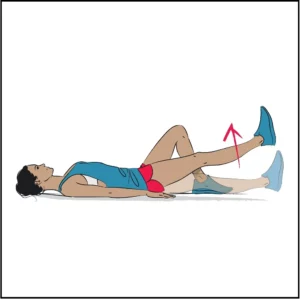
- Description: Beneficial for the quadriceps without putting pressure on the knees.
- How to: Lie on your back with one leg bent and the other straight. Tighten the thigh muscles of the straight leg and lift it to the height of the bent knee. Lower it down slowly.
- Repetitions: Complete 2-3 sets of 10-15 lifts for each leg.
Wall Squats
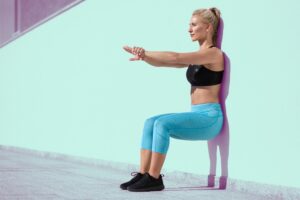
- Description: A controlled way to strengthen the thighs and glutes while ensuring the knees do not go past the toes.
- How to: Stand with your back against a wall, feet shoulder-width apart. Slowly slide down into a squatting position, making sure your knees are directly above your ankles. Push through your heels to stand up.
- Repetitions: Aim for 2-3 sets of 10-12 squats.
While these exercises can be instrumental in bolstering knee health, always consult with a fitness or healthcare professional before starting a new exercise regimen, especially if you have existing knee issues.
Warning Signs: When is it More than Just a Pain?
Knee pain when walking is, unfortunately, a common complaint. While it can often be managed with rest and home remedies, it’s crucial to recognize when the pain may be signaling a more severe underlying condition. Let’s delve into the symptoms and situations that warrant immediate medical attention:
- If your knee pain persists even after resting for several days, it could be indicative of a significant issue.
- Occasional swelling might be expected after strenuous activities, but if the swelling doesn’t reduce with rest and home remedies, or if it’s accompanied by heat and redness, it’s a red flag.
- If you find it challenging to straighten or bend your knee fully, or you experience stiffness that doesn’t fade with movement, it’s essential to consult a professional.
- Any noticeable change in the shape or alignment of your knee after an injury or suddenly could indicate a severe problem.
- If your knee gives out while walking, or feels like it might, this instability can point to ligament damage or other injuries.
- Consistent sounds like popping, grinding, or clicking when moving the knee, especially if paired with pain, can be concerning.
- If knee discomfort is severe enough to interrupt or prevent sleep, it’s a clear signal to seek medical advice.
If you experience any of these symptoms, or if your intuition tells you something is not right, it’s always best to err on the side of caution and consult with a healthcare professional.
How Physical Therapy Can Help?
 Navigating the realm of knee pain can often feel daunting. With myriad treatments available, it’s essential to identify methods that address not just the symptoms but also the root causes of the pain. Herein lies the beauty of physical therapy, a holistic and proactive approach to alleviating knee pain when walking.
Navigating the realm of knee pain can often feel daunting. With myriad treatments available, it’s essential to identify methods that address not just the symptoms but also the root causes of the pain. Herein lies the beauty of physical therapy, a holistic and proactive approach to alleviating knee pain when walking.
- Physical therapists possess the expertise to evaluate your specific situation and craft a tailor-made treatment plan that addresses your unique pain points.
- Physiotherapy goes beyond immediate pain relief. Through a series of curated exercises and stretches, therapists aim to restore mobility, flexibility, and strength to the knee, ensuring you can walk without hindrance.
- Regular physical therapy sessions can not only treat existing pain but also act as a preventive measure. Therapists can identify potential problems before they escalate, suggesting exercises or interventions to avert future pain.
- In many cases, consistent physical therapy can delay or even eliminate the need for surgical interventions.
Conclusion
Knee pain when walking can be more than just a fleeting discomfort—it can significantly disrupt your daily activities and diminish your quality of life. However, with the right knowledge and tools at your disposal, you can confront this challenge head-on. Remember, it’s not just about immediate relief but understanding and addressing the root cause to ensure long-term wellness. At PhysioMantra, our dedicated professionals are equipped to guide you through this healing journey. If you’re experiencing Knee pain, physical therapy for knee pain at PhysioMantra can help: Book an online physical therapy session.


